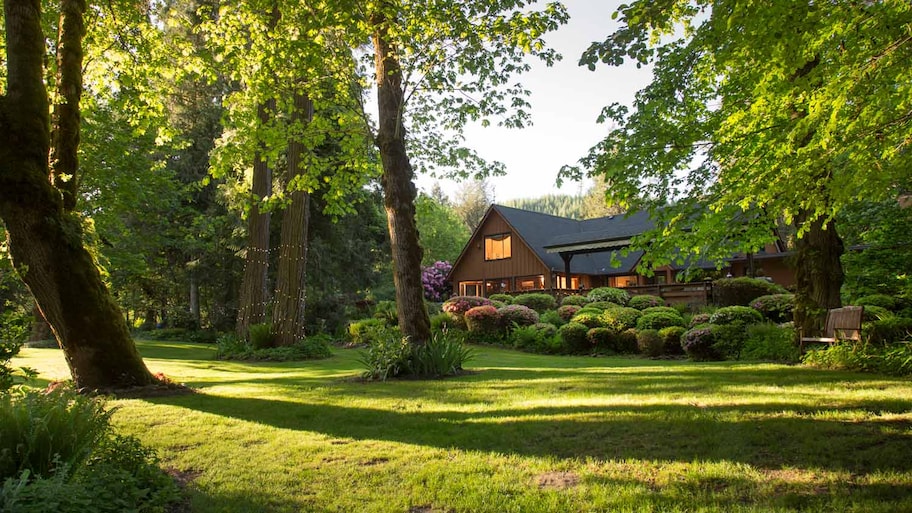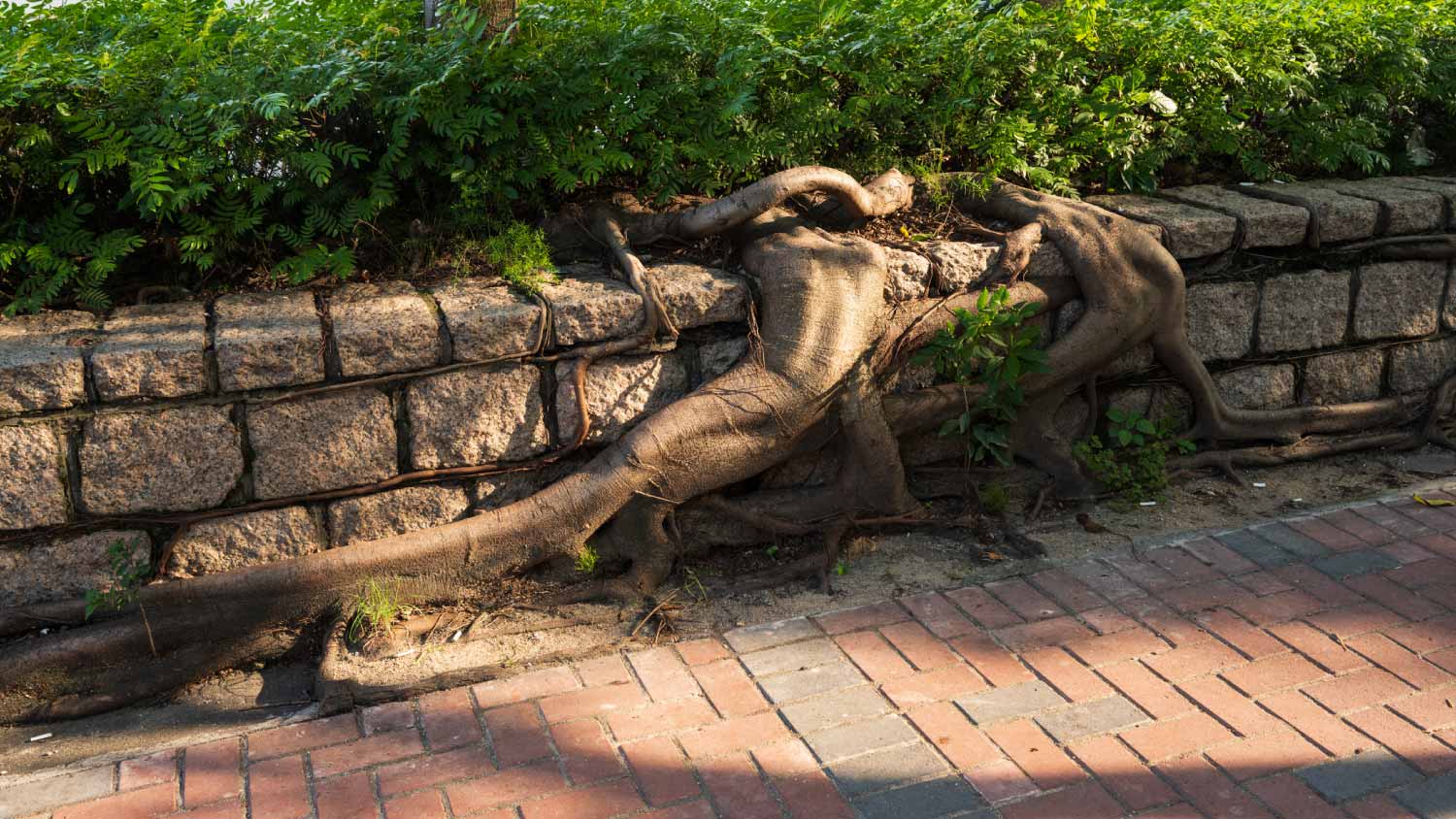Can You Cut Down a Tree on Your Property?
Before you grab your chainsaw, read this guide


You might need a permit if your tree is endangered or very large.
You usually don’t need a permit to cut down a dead or hazardous tree.
You can be fined for ignoring local tree protection ordinances.
Clearing trees costs an average of $750 per tree.
If you have a tree on your property that you need to remove, you might be wondering if there are regulations you’ll have to follow in order to cut it down. Can you cut down a tree on your property whenever you want, or are there times you’ll need a permit? The short answer is that it depends. States, counties, and local governments do have laws about trees, called tree protection ordinances, that govern which trees can be cut and what permits are required. So, before you go chopping down trees with abandon, here’s what you need to know.
When You Will Need a Permit
While in some places, it’s totally fine to chop down a tree in your yard without a permit or a license, if you violate your local tree protection ordinances, fines can be steep. It’s a much better plan to check with your local government permitting authority before embarking on a tree clearing adventure to avoid fines and other penalties. Since fines can run into the hundreds of thousands for illegally cutting a tree in some places, and the maximum fine averages $10,000 in the U.S., doing a little research first is your best bet. If you have a tree that poses an immediate risk, contacting an arborist to assess the situation is always a good option.
Here’s a closer look at some of the situations in which permits tend to be necessary:
Endangered Trees
Trees can become endangered due to development of land, logging practices, or because of disease or pests. Native tree species can be especially beneficial to wildlife as well as uniquely adapted to environmental conditions. In some places, state and local governments will choose to protect certain species to prevent them from being removed entirely from the local landscape as well as to keep the character of local flora from changing. In the city of Boise, Idaho, for example, a permit is required to cut down any elm tree on private property. This regulation is meant to help control the spread of Dutch elm disease.
Heritage Trees
A heritage tree can be any tree that has historical or social significance because of its age, size, or manner in which it grows. These trees can also be marked as special because they are endangered, either because of human interference or because of disease. Local municipalities will often have rules concerning the protection of these special trees to preserve them for future generations. In many areas of California, for example, people found guilty of cutting down heritage trees unlawfully can be faced with penalties up to $25,000.
Other Protected Trees
Even if a tree isn’t considered a heritage or endangered tree, it may be protected solely because of its size or age. Some local governments consider larger, older trees to be of value to the community because of their cooling properties, their positive impact on air quality, or their aesthetic appeal. (Plus, larger trees are much more difficult to fell safely.) In San Jose, CA, for example, a permit is required to cut down any tree with a trunk circumference of 56 inches or more.
It’s also possible that a tree’s location, like its proximity to a shoreline or protected wildlife area, will affect its status when it comes to permitting.
Trees on the Curb Strip
If you live in a city, it’s possible that you will have trees growing on the strip of land between the sidewalk and the street. While maintaining these trees is often the responsibility of the homeowner, these trees are technically on the public right of way, bordering the road. Because of this, and because of their proximity to power lines and other utilities, they are often subject to special rules.
To trim or cut a tree on the curb strip, a permit is usually required, even though the responsibility for these trees falls on the homeowner. These gray area trees are so common in some cities that there is a separate permitting process in place for them. Checking with your local municipality to figure out what the rules are for these specific trees is a good idea before clearing trees on this strip of land.
When You Don’t Need A Permit

In cases where a tree is dangerous for people or structures because it is leaning, dropping limbs, or the trunk is split, you can almost always cut your tree without a permit. A fallen tree is also generally exempt from permitting rules. Many local governments have tree hotlines people can call to determine whether a tree is considered dangerous. Some municipalities have also developed lists of invasive tree species that may be eliminated without a permit.
Dangerous Trees
A tree may be considered to be dangerous if it is:
Leaning
Split or severely damaged
Wobbly
Dropping branches
Infested or diseased
Dead
Fallen
Impinging on a structure
Invasive Trees
Trees that are considered invasive are usually non-native, fast growing, and fast spreading varieties. These trees are usually considered to be destructive either to local native species or to structures. These trees can usually be removed without a permit, but it’s a good idea to consult a local tree care expert to make sure that you have correctly identified the tree before cutting.
Average Cost of Tree Removal
Thinking of hiring a local tree cutting service? On average, tree removal costs between $200 and $2,000—an average of $750 per tree—depending on the size of the job. To estimate the cost of removing your tree, you can calculate that it will cost between $9.50 and $14.50 per foot. Factors that can affect your tree removal costs are the height and diameter of the tree as well as obstacles at the removal site such as hills, utility lines, and structures that need to be protected.





- When To Cut Down A Tree: 13 Ways To Tell
- 7 Reasons Why You Shouldn't Plant a Tree in Your Yard
- How to Tell What Type of Tree You Have in Your Yard
- How to Choose Between a Real or an Artificial Christmas Tree
- Why Tree Topping Techniques Are Bad for Your Tree and Your Property
- How to Get the City to Trim or Remove a Tree
- Can You Trim Trees in the Summer?
- How to Dispose of Your Christmas Tree Once the Holidays Are Over
- What to Know About Performing Tree Trimming Safety
- 9 Ways to Protect Your Trees From Winter Storms










